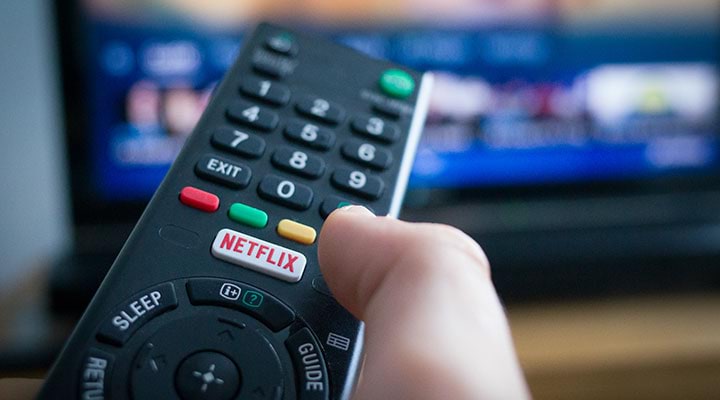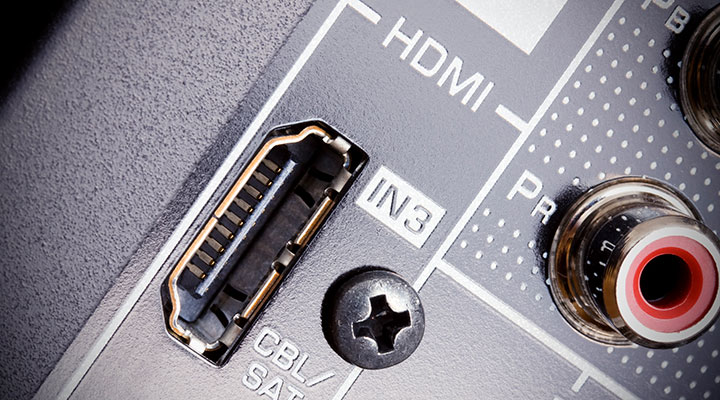Getting started with streaming TV
Streaming TV is the hottest way to watch your favorite shows and movies. It's convenient, flexible and offers you a customized experience that can be enjoyed from almost anywhere. If you're new to streaming, there are a few things you'll need in order to stream the latest episodes of your favorite shows and movies.

Streaming TV is relatively simple to do, once you know the steps to take:
- Sign up with one or more streaming service providers that have the content you want to watch (think Netflix, HBO, Amazon Prime, Hulu, etc.)
- Make sure you have a high-speed internet connection (we recommend at least 20 Mbps)
- Get a streaming device or watch from your tablet, laptop or even smartphone
Check your TV and internet speed
If you want to watch on a television (rather than a tablet, laptop or smartphone), check to see what type of TV you have. Most televisions manufactured since 2014 are high definition (HD), so if you've got a newer TV it's probably HD. Televisions from 2014 or before will typically be standard definition (SD). Apart from Netflix, most streaming services do not offer an SD plan, so before you sign up for streaming services, be sure your TV is compatible.
HD TVs require a faster internet speed, as does 4K, the latest in television technology. Here are the internet speeds needed for streaming video:
- Standard definition (SD) streaming on one device: 3-4 Mbps
- High definition (HD) streaming on one device: 5-8 Mbps
- Ultra HD or 4K streaming on one device: 25 Mbps and up
It's important to note that if you have multiple members of your household wanting to stream at the same time, you will need to multiply the recommended bandwidth by the number of devices. For instance, three devices all streaming HD at once would require 15-24 Mbps.
Streaming device, smart TV or gaming console?
Once your TV and internet connection are ready, you'll need a way to access streaming services. There's a variety of devices out there, which generally fall into three categories:
- Dedicated streaming devices that enable you to watch through your TV, such as Google Chromecast, Apple TV, Roku Stick or Amazon Fire
- Smart TVs with built-in streaming apps that can be accessed through the television’s remote
- Gaming consoles with streaming capabilities, such as X-box One, PlayStation 4 or Nintendo Switch (some gaming consoles offer only certain streaming platforms)
It's all about personal choice when picking a streaming device. If you have a smart TV and notice the built-in apps aren't robust enough, you can always add a separate streaming device to expand your options. For more on this, check out our quick guide for choosing the right streaming device for you. And, if you don’t want to purchase a new device, most streaming services work well on your smartphone, tablet or computer.
Do I need an HDMI cable?

An HDMI, or high definition multimedia interface, cable connects a streaming device, computer or DVD player to your television or monitor. Some devices come with their own HDMI connections, and other devices require you to get your own HDMI cable. The first step is to check on your streaming device and determine if you need to buy an HDMI cable.
HDMI cables are available in four speed types: standard, high speed, high speed premium and ultra-high speed. The standard speed HDMI cables are harder to find these days because of the move to high definition and 4K, which demand faster cables. When looking for an HDMI cable, be sure to for speed capability. A high speed cable will suit most viewing needs.
Do I need an antenna?
You do not need an antenna to stream, but some people buy an over-the-air (OTA) antenna to enable viewing of local channels, like NBC, CBS, ABC, FOX, PBS, CW and primetime sports for free. It is okay to have both an antenna and a streaming device attached to your TV.
A couple of things to consider before buying an antenna: First, check your current TV bundles. A lot of packages include local broadcast stations and programming that might already suit your needs. Using an antenna could add 20-150 free channels, but the exact number of channels depends on your location. To find a listing of channels in your area, there are online tools where you can enter your location and view all the available channels that can be picked up via an antenna. Many streaming devices will offer some local content, but if you're really thirsting for lots of local shows and sports, an antenna might be a good choice.
There are two types of antennas: indoor and outdoor. Indoor antennas are good for city and suburban dwellers and outdoor antennas are best for those who live far from a broadcast tower or in rural areas. There are hundreds of antennas to choose from, and you can install one yourself or find an installer to help, depending on your level of expertise.
You’re ready to go!
Now that you've got the internet speed and equipment you need, you're almost ready to start streaming! Plug in your device and follow the step-by-step instructions to get it connected to the internet, usually through your home WiFi network. Now there's just one final but important step: getting set up with one or more streaming services. For any streaming service that is not on your smart TV or device, you'll need to download it yourself. For example, if your smart TV doesn't have Hulu already programmed into its system, and you want to watch their content, you'll need to go to their website, download their app and sign up for service. Most streaming services offer different subscription levels at different monthly costs. Sometimes you can bundle services together to get a discount. Learn more about the different kinds of streaming services out there.
This part can be confusing but is also the most fun - finding something to watch! We've made it easier for you with the TV recommendation tool, which is a great way to locate the streaming services that are best for you.
Was this information helpful?
Support topics





.png)





